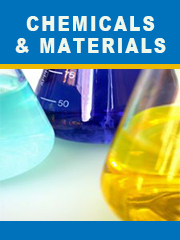Report overview
Silicone elastomers are compounded using reactive, straight chained molecules together with a cross-linking agent and reinforcement to give good mechanical properties (elasticity, absorption, tear strength). Silicones are high-performance polymers that exhibit properties of both inorganic and organic compounds. Silicone elastomers are made with a combination of linear polymers, reinforcing agents, a crosslinker and a catalyst. The viscosity and type of the basic straight-chain molecule combined with the processing temperature determine the type of elastomer produced: Heat Cured Rubber (HCR), Liquid Silicone Rubber (LSR), and Room Temperature Vulcanization (RTV). These elastomers can be reinforced with either mineral fillers, such as silica, alumina, calcium carbonate, silicone resins, etc. Radical, condensation or addition crosslinking reactions may be used depending on the technology chosen to meet precise processing requirements. A wide variety of additives can be added to the elastomer in its final composition to ensure specific characteristics (color, rheology, pot life, etc.) or performance standards (electrical insulation or conduction, heat transfer, fire retardancy, chemical adhesion, mold release, etc.).
Silicones have a multitude of characteristics including heat resistance, cold resistance, weatherability, water repellency, defoaming properties, adhesiveness, releasability and dielectric properties. Silicone products are used in numerous ways to improve safety and reliability, and to make automobiles smaller, lighter and more eco-friendly.
This report aims to provide a comprehensive presentation of the global market for Automotive Silicone Elastomers, with both quantitative and qualitative analysis, to help readers develop business/growth strategies, assess the market competitive situation, analyze their position in the current marketplace, and make informed business decisions regarding Automotive Silicone Elastomers. This report contains market size and forecasts of Automotive Silicone Elastomers in global, including the following market information:
Global Automotive Silicone Elastomers Market Revenue, 2018-2023, 2024-2029, ($ millions)
Global Automotive Silicone Elastomers Market Sales, 2018-2023, 2024-2029, (K MT)
Global top five Automotive Silicone Elastomers companies in 2022 (%)
The global Automotive Silicone Elastomers market was valued at US$ million in 2022 and is projected to reach US$ million by 2029, at a CAGR of % during the forecast period. The influence of COVID-19 and the Russia-Ukraine War were considered while estimating market sizes.
The U.S. Market is Estimated at $ Million in 2022, While China is Forecast to Reach $ Million.
High Temperature Vulcanised (HTV) Segment to Reach $ Million by 2029, with a % CAGR in next six years.
The global key manufacturers of Automotive Silicone Elastomers include Dow, Wacker Chemicals, Momentive, Shin-Etsu, KCC Corporation, BlueStar, Reiss Manufacturing, Laur Silicone and Guangdong Polysil, etc. in 2022, the global top five players have a share approximately % in terms of revenue.
We surveyed the Automotive Silicone Elastomers manufacturers, suppliers, distributors and industry experts on this industry, involving the sales, revenue, demand, price change, product type, recent development and plan, industry trends, drivers, challenges, obstacles, and potential risks.
Total Market by Segment:
Global Automotive Silicone Elastomers Market, by Type, 2018-2023, 2024-2029 ($ Millions) & (K MT)
Global Automotive Silicone Elastomers Market Segment Percentages, by Type, 2022 (%)
High Temperature Vulcanised (HTV)
Room Temperature Vulcanised (RTV)
Liquid Silicone Rubber (LSR)
Fluorosilicone Rubber (FSR)
High Consistency Silicone Rubber (HCR)
Silicone Gels
Global Automotive Silicone Elastomers Market, by Application, 2018-2023, 2024-2029 ($ Millions) & (K MT)
Global Automotive Silicone Elastomers Market Segment Percentages, by Application, 2022 (%)
Passenger Cars
Light Commercial Vehicles
Heavy Commercial Vehicles
Global Automotive Silicone Elastomers Market, By Region and Country, 2018-2023, 2024-2029 ($ Millions) & (K MT)
Global Automotive Silicone Elastomers Market Segment Percentages, By Region and Country, 2022 (%)
North America
US
Canada
Mexico
Europe
Germany
France
U.K.
Italy
Russia
Nordic Countries
Benelux
Rest of Europe
Asia
China
Japan
South Korea
Southeast Asia
India
Rest of Asia
South America
Brazil
Argentina
Rest of South America
Middle East & Africa
Turkey
Israel
Saudi Arabia
UAE
Rest of Middle East & Africa
Competitor Analysis
The report also provides analysis of leading market participants including:
Key companies Automotive Silicone Elastomers revenues in global market, 2018-2023 (Estimated), ($ millions)
Key companies Automotive Silicone Elastomers revenues share in global market, 2022 (%)
Key companies Automotive Silicone Elastomers sales in global market, 2018-2023 (Estimated), (K MT)
Key companies Automotive Silicone Elastomers sales share in global market, 2022 (%)
Further, the report presents profiles of competitors in the market, key players include:
Dow
Wacker Chemicals
Momentive
Shin-Etsu
KCC Corporation
BlueStar
Reiss Manufacturing
Laur Silicone
Guangdong Polysil
Shenzhen SQUARE Silicone
Jiangsu Tianchen
Outline of Major Chapters:
Chapter 1: Introduces the definition of Automotive Silicone Elastomers, market overview.
Chapter 2: Global Automotive Silicone Elastomers market size in revenue and volume.
Chapter 3: Detailed analysis of Automotive Silicone Elastomers manufacturers competitive landscape, price, sales and revenue market share, latest development plan, merger, and acquisition information, etc.
Chapter 4: Provides the analysis of various market segments by type, covering the market size and development potential of each market segment, to help readers find the blue ocean market in different market segments.
Chapter 5: Provides the analysis of various market segments by application, covering the market size and development potential of each market segment, to help readers find the blue ocean market in different downstream markets.
Chapter 6: Sales of Automotive Silicone Elastomers in regional level and country level. It provides a quantitative analysis of the market size and development potential of each region and its main countries and introduces the market development, future development prospects, market space of each country in the world.
Chapter 7: Provides profiles of key players, introducing the basic situation of the main companies in the market in detail, including product sales, revenue, price, gross margin, product introduction, recent development, etc.
Chapter 8: Global Automotive Silicone Elastomers capacity by region & country.
Chapter 9: Introduces the market dynamics, latest developments of the market, the driving factors and restrictive factors of the market, the challenges and risks faced by manufacturers in the industry, and the analysis of relevant policies in the industry.
Chapter 10: Analysis of industrial chain, including the upstream and downstream of the industry.
Chapter 11: The main points and conclusions of the report.
